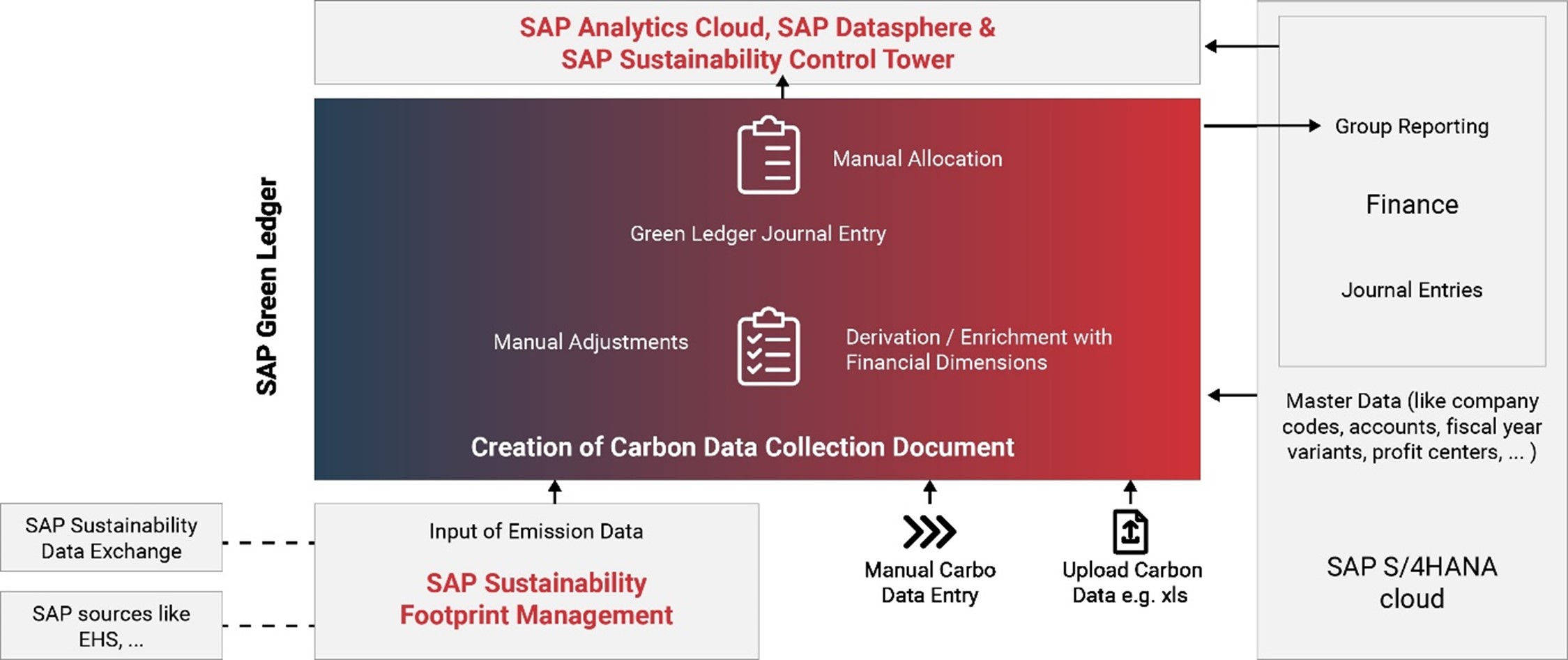Can Profitability and Sustainability Go Hand in Hand?
There are many reasons why companies are increasingly grappling with the challenge of combining profitability and sustainability.
On the one hand, there is external pressure from regulations and customers; on the other hand, there are internal efforts such as marketing, employee engagement, or the fundamental desire to operate not only profitably but also sustainably.
When it comes to the actual implementation of initiatives to reduce emissions and water consumption or to track supply chains, there is often a central problem: How do you measure the effectiveness of these initiatives?
This is usually not possible without data. This data needs to be collected and managed, but ultimately it also needs to be evaluated and analyzed. One thing is certain: It requires the collection and management, but above all the correct evaluation and analysis of data. Estimates and results from meetings and emails compiled in Excel spreadsheets are often inadequate and time-consuming, which impairs data quality and comparability.
These challenges are very reminiscent of the problems of accounting in the 1950s and 1960s, until it was gradually managed more and more electronically and partially automated in the following decades. For this reason, one of the first systems developed by SAP in 1973 was SAP-RF for financial accounting. Just as the general ledger has established itself as a general ledger in the ERP system, SAP is now striving to achieve the same goal for sustainability with its new cloud portfolio: The SAP Green Ledger provides a semi-automated solution for recording, managing, and reporting sustainability data.

Figure 1: Green Ledger as a connecting element between SAP SFM and SCT (Source: SAP)
Central Solutions for Companies: Mastering New Tasks and Transparency Obligations
Two central solutions support companies with their new tasks and transparency obligations in the area of sustainability: SAP Sustainability Footprint Management (SFM) and SAP Sustainability Control Tower (SCT).
The SAP Sustainability Footprint Management (SFM) aims to establish a central data foundation that provides transparency on the amount of CO₂ produced, both at the company-wide level and for individual products. Water and electricity consumption can also be recorded. To make this possible, SAP SFM is closely linked to the existing data records in the SAP system. Existing data such as plants, material masters and machines serve as the basis for the calculations. External data from suppliers can also be integrated.
This data is not only available for evaluation and analysis, but is also transferred back to SAP S/4HANA. This makes it possible, for example, to view the carbon footprint of certain materials in purchasing.
The data from various sources – whether SAP SFM, databases such as the SAP Sustainability Data Exchange, or existing Excel spreadsheets – can be linked to the SAP Sustainability Control Tower (SCT) via SAP Datasphere. This results in auditable sustainability indicators that can, for example, fulfil some of the requirements of the European Corporate Sustainability Reporting Directive (CSRD).
Another new feature introduced within this quarter is the ability to generate a ready-made report with the help of an AI assistant, which serves as the basis for such report. In addition, SAP SCT also offers the option of creating future-proof planning and forecasts via dashboards and reports.
SAP Sustainability Footprint Management (SFM) and the SAP Sustainability Control Tower (SCT) form a strong team for determining, displaying, and reporting emission values. If both products are not in use, each individual product offers the possibility to use the required basic functionalities. For example, CO₂ data can be integrated into SCT manually and via Excel import without the need for SFM.
Green Ledger as a Central Interface
Since this year, SAP has been offering extended functions with the “Green Ledger”. In fact, it acts as an interface between the various sustainability solutions. This makes it possible to link data directly to company codes, profit centers, and other organizational elements. This precise assignment of emission data to financial data enables the integration of CO2 effects as a criterion for reporting and strategic decisions within the company.
It is generally advisable to start small on the way to a complete green ledger, for example by tracking the CO2 emissions of a single production line. After a short project as a quick win, it becomes much easier to assess where in the company it makes sense to proceed further and how this can be implemented.
Conclusion
SAP Sustainability Footprint Management and SAP Sustainability Control Tower support companies with new tasks and transparency obligations. With the Green Ledger, SAP also offers extended functions that serve as an interface between the various sustainability solutions.
Are you already on your way to becoming a sustainable company or would you like to take the first steps in this direction? Let's find out together how SAP Green Ledger supports your company! Contact us for a non-binding initial consultation and find out more about our upcoming events!
